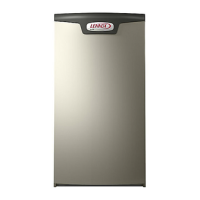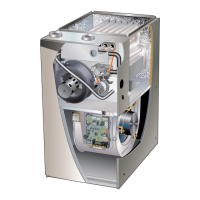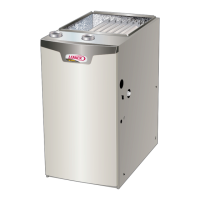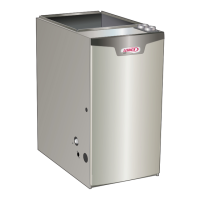Page 5
• Blower and vestibule access panels must be in place
on the furnace at all times.
• The furnace heat exchanger, components, duct system,
and evaporator coils must be thoroughly cleaned follow-
• -
tion.
• All furnace operating conditions (including ignition, in-
in accordance with these installation instructions.
EQUIPMENT MAY EXPERIENCE PREMATURE COM-
PONENT FAILURE AS A RESULT OF FAILURE TO FOL-
LOW THE ABOVE INSTALLATION INSTRUCTIONS.
FAILURE TO FOLLOW THE ABOVE INSTALLATION IN-
STRUCTIONS VOIDS THE MANUFACTURER’S EQUIP-
MENT LIMITED WARRANTY. LENNOX DISCLAIMS
ALL LIABILITY IN CONNECTION WITH INSTALLER’S
FAILURE TO FOLLOW THE ABOVE INSTALLATION IN-
STRUCTIONS.
NOTWITHSTANDING THE FOREGOING, INSTALLER
IS RESPONSIBLE FOR CONFIRMING THAT THE USE
OF CONSTRUCTION HEAT IS CONSISTENT WITH THE
POLICIES AND CODES OF ALL REGULATING ENTI-
TIES. ALL SUCH POLICIES AND CODES MUST BE AD-
HERED TO.
General
These instructions are intended as a general guide and do
not supersede local codes in any way. Consult authorities
having jurisdiction before installation.
In addition to the requirements outlined previously, the fol-
lowing general recommendations must be considered
when installing a EL297UHV furnace:
• Place the furnace as close to the center of the air distri-
bution system as possible. The furnace should also be
located close to the vent termination point.
• When the furnace is installed in non-direct vent applica-
tions, do not install the furnace where drafts might blow
directly into it. This could cause improper combustion
and unsafe operation.
• When the furnace is installed in non-direct vent applica-
tions, do not block the furnace combustion air opening
with clothing, boxes, doors, etc. Air is needed for proper
combustion and safe unit operation.
• When the furnace is installed in an attic or other insulat-
ed space, keep insulation away from the furnace.
• When the furnace is installed in an unconditioned
space, consider provisions required to prevent freezing
of condensate drain system.
• Please consult the manufacturer of your evaporator
coil for their recommendations on distance required
between the heat exchanger and their drain pan. Ad-
equate space must be provided between the drain pan
and the furnace heat exchange.
CAUTION
EL297UHV unit should not be installed in areas normally
subject to freezing temperatures.
WARNING
nausea, dizziness or asphyxiation. It will also cause
excess water in the heat exchanger resulting in rusting
and premature heat exchanger failure. Excessive
exposure to contaminated combustion air will result
in safety and performance related problems. Avoid
exposure to the following substances in the combustion
air supply:
Permanent wave solutions
Chlorinated waxes and cleaners
Chlorine base swimming pool chemicals
Water softening chemicals
De-icing salts or chemicals
Carbon tetrachloride
Halogen type refrigerants
Cleaning solvents (such as perchloroethylene)
Printing inks, paint removers, varnishes, etc.
Hydrochloric acid
Cements and glues
Antistatic fabric softeners for clothes dryers
Masonry acid washing materials
Combustion, Dilution & Ventilation Air
If the EL297UHV is installed as a Non-Direct Vent Fur-
nace, follow the guidelines in this section.
NOTE - In Non-Direct Vent installations, combustion air is
taken from indoors or ventilated attic or crawlspace and
ue gases are discharged out-doors.
that was needed. In today’s homes, tight construction
practices make it necessary to bring in air from outside for
combustion. Take into account that exhaust fans, appli-
that could be used for combustion out of the house.
Unless outside air is brought into the house for combus-
tion, negative pressure (outside pressure is greater than
inside pressure) will build to the point that a downdraft
can occur in the furnace vent pipe or chimney. As a result,
combustion gases enter the living space creating a poten-
tially dangerous situation.
-
tion and ventilation, use the guidelines and procedures in
-
cient and safe operation. You must consider combustion
air needs and requirements for exhaust vents and gas
piping. A portion of this information has been reprinted
with permission from the National Fuel Gas Code (ANSI.
Z223.1/NFPA 54). This reprinted material is not the com-
subject, which is represented only by the standard in its
entirety.
In Canada, refer to the CSA B149 installation codes.

